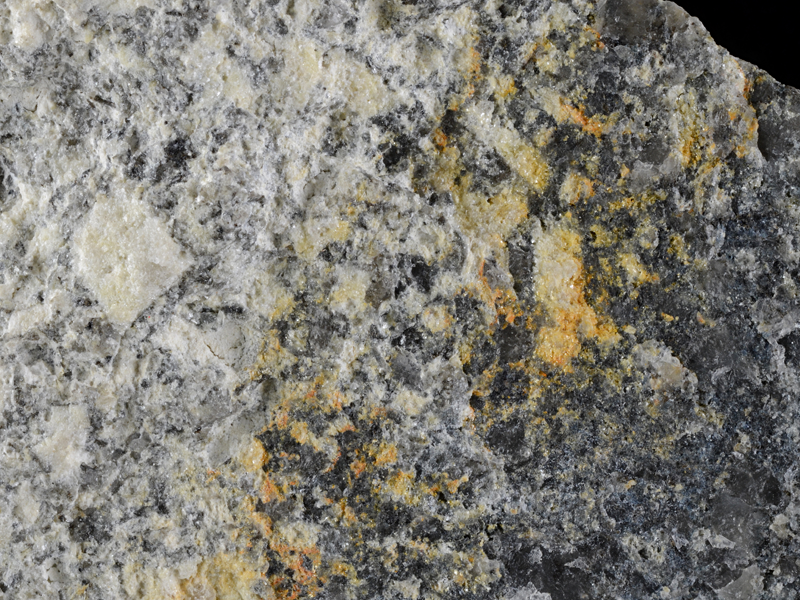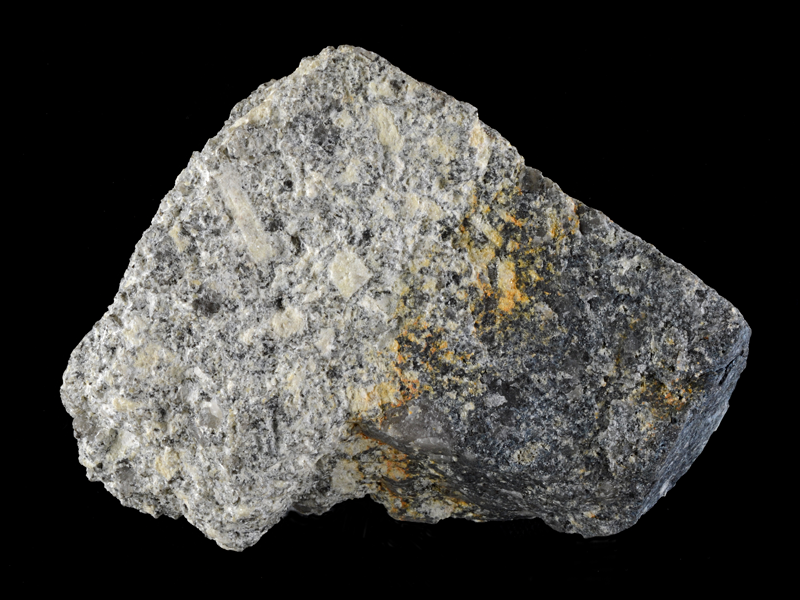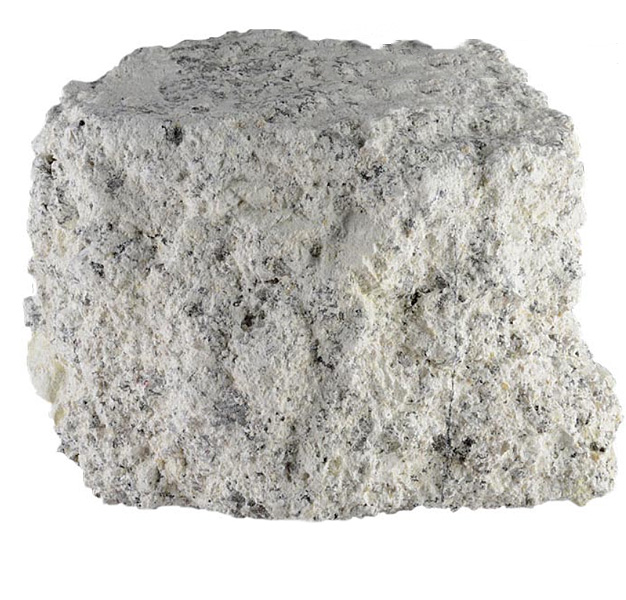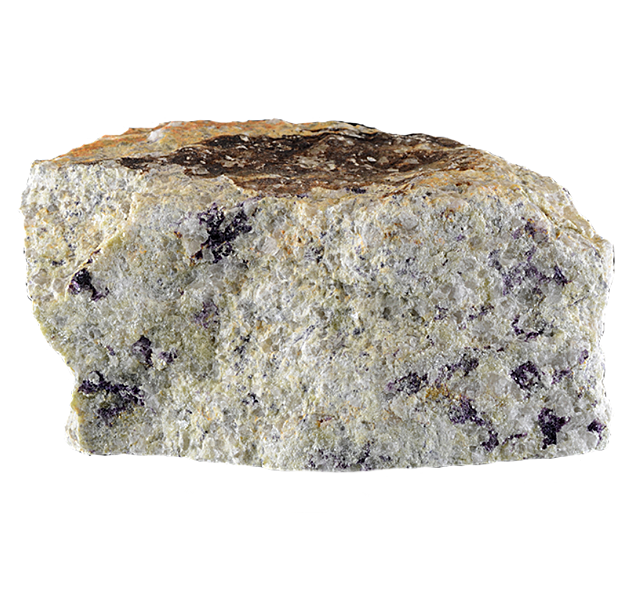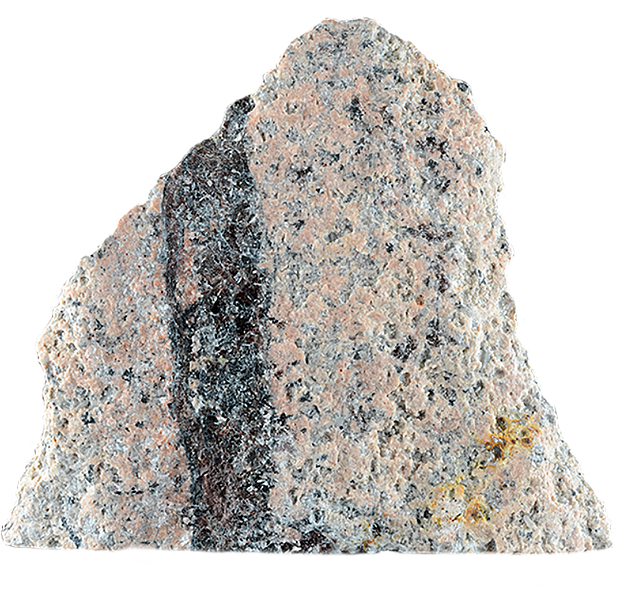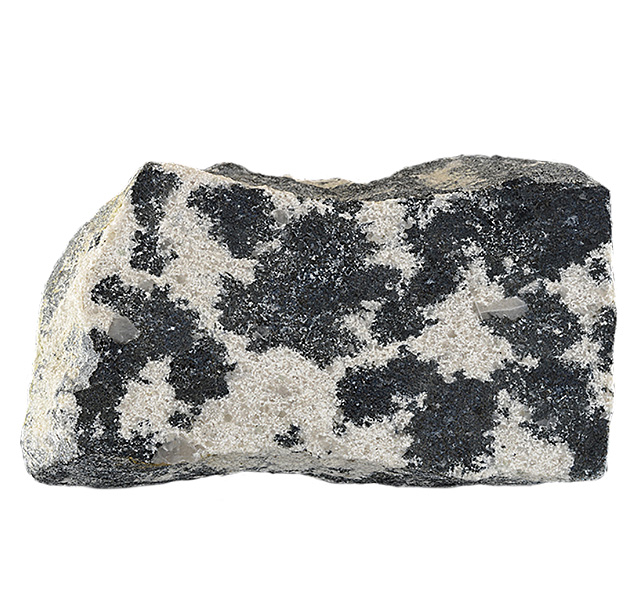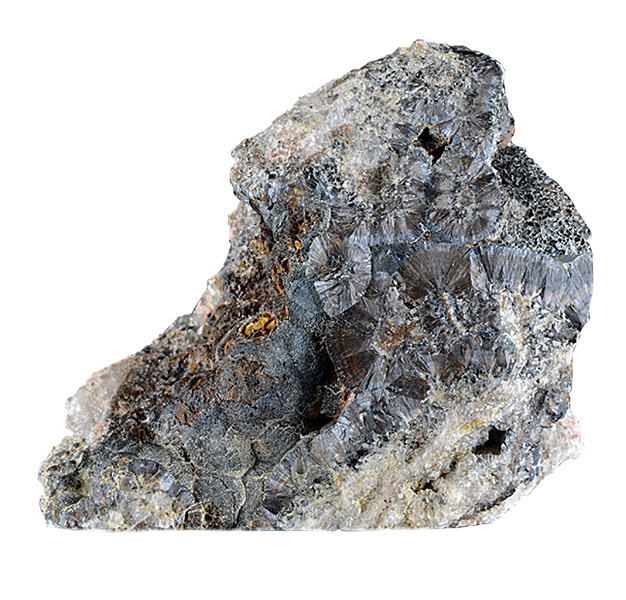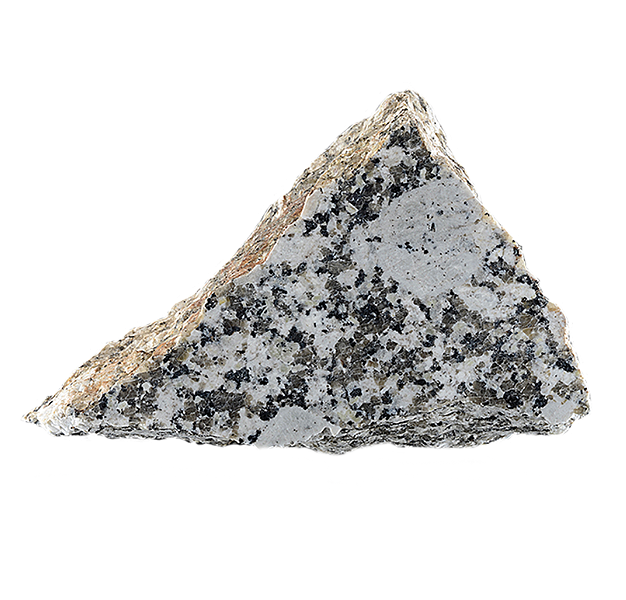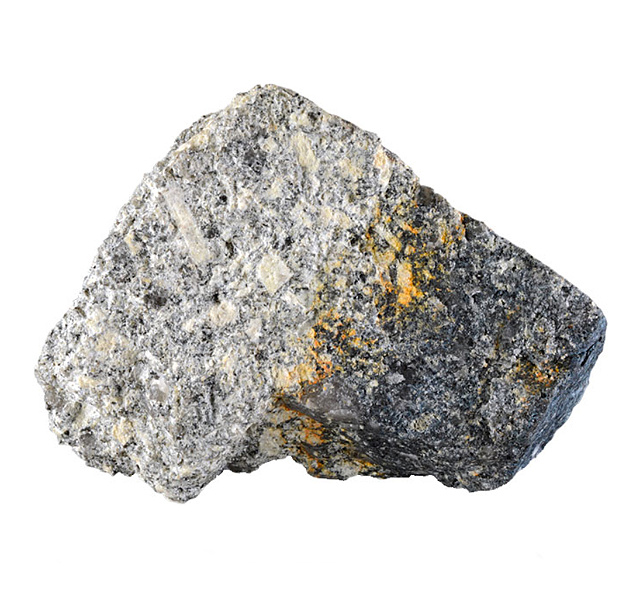
Fact sheet
This sample originates from Goonbarrow china clay pit, St Austell, Cornwall, which is one of many greisen areas bordering aplite veins. The greisens were caused by fluids flowing through the veins early in the mineralisation sequence and were associated with hydraulic fracturing of the country rock. The greisens are commonly associated with tin and copper mineralisation.
In thin section the rock is rich in quartz and equidimensional tourmaline grains exhibiting characteristic patchy brown/blue colouring and low second order birefringence colours. Fine-grained topaz is also very common and appears to have replaced large areas of the pre-existing minerals.
A case study of the St Austell granite complex in Cornwall, England, illustrating the range of rocks associated with a granite intrusion. The earliest part of the complex is a siderophyllite (biotite) granite containing muscovite and tourmaline typical of a SW England granite, with many primary magmatic features.
This early intrusion was followed by the intrusion of an evolved volatile-rich magma which was the driving force behind a series of intense hydrothermal processes as volatiles escaped from this magma and helped to establish an extensive alteration halo (aureole). Boron, fluorine and lithium (as well as water) played major roles in the formation of the second intrusion and in the associated hydrothermal processes. Igneous activity lasted around 18 million years from 282 Ma (siderophyllite granite) to 265 Ma (fluorite granite).
